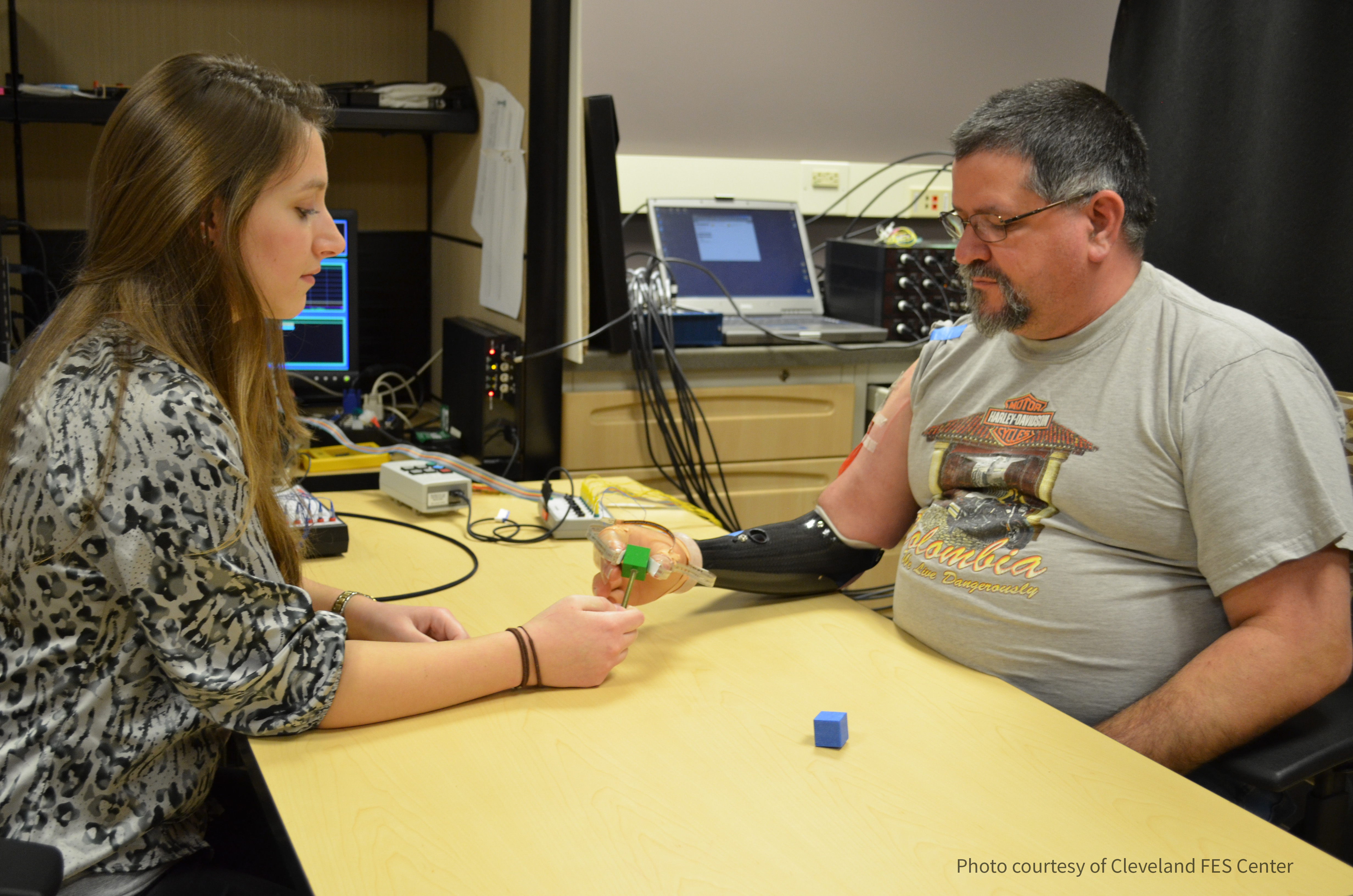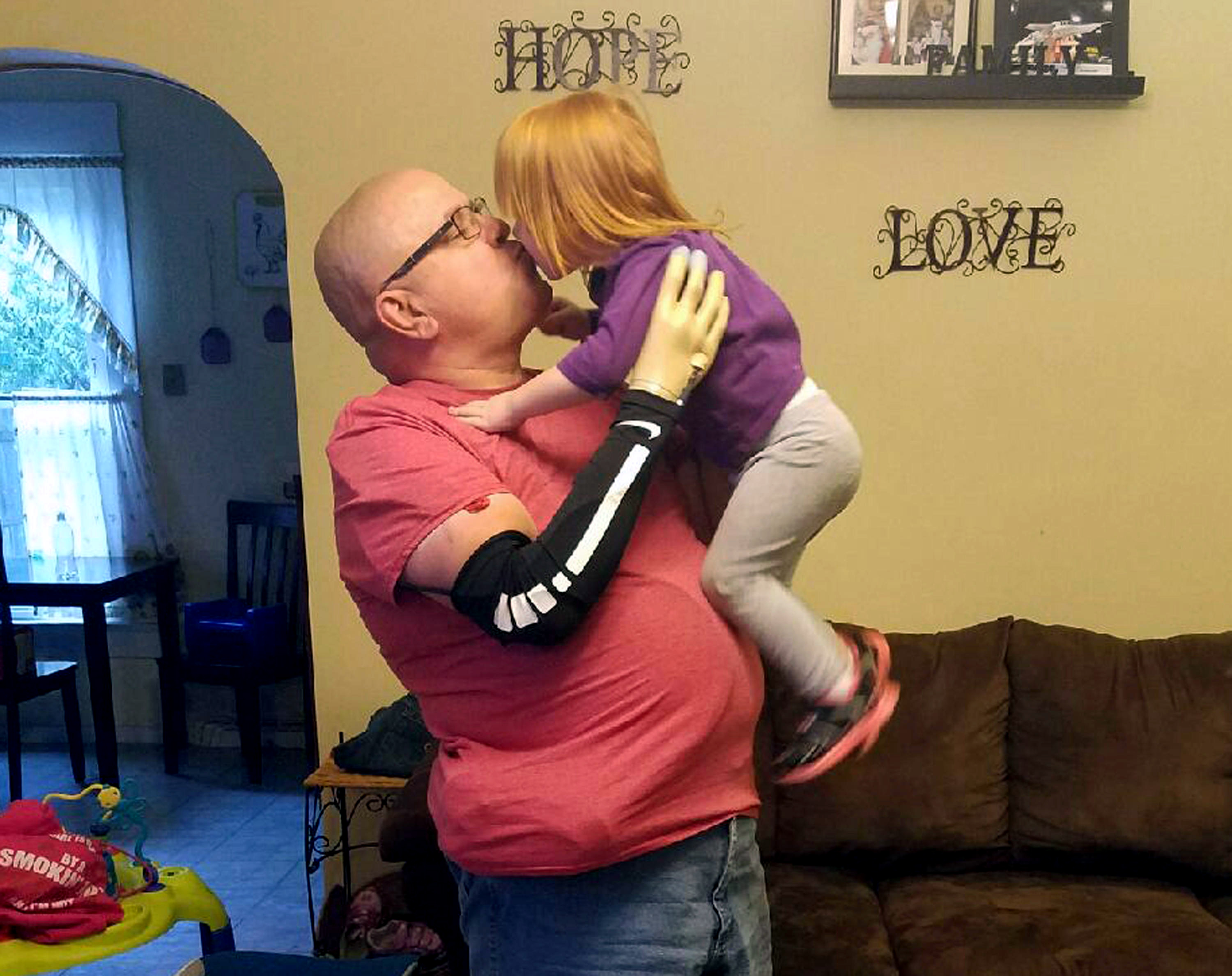Advanced Platform Technology Center
Emily Graczyk, PhD
 Research interests
Research interests
Neural interfaces for somatosensory function restoration; Neural coding of sensation; Sensory learning; Psychosocial implications of artificial touch; Maximizing sensory information transmission using artificial intelligence
Dr. Emily Graczyk is a Research Associate in the Department of Biomedical Engineering at Case Western Reserve University and an Investigator in the Advanced Platform Technology Center at the Louis Stokes Cleveland VA Medical Center. She earned her BS at the University of South Carolina, Columbia and her PhD at Case Western Reserve University, both in Biomedical Engineering. Dr. Graczyk’s research examines the coding and processing of somatosensory information and the perceptual and psychological experience of artificial sensation created by neurotechnology. She uses cross-disciplinary approaches to study sensation, including neural stimulation, computational modeling, psychometrics, behavioral assessments, and qualitative analyses. During her PhD training, she was awarded a National Science Foundation (NSF) Graduate Research Fellowship. She has recently secured independent funding from the Department of Defense and the Defense Advanced Research Projects Agency (DARPA) for her research projects. In 2018, Dr. Graczyk was named a DARPA Riser, one of a select group of early career investigators identified as potential future superstars whose work could impact national security. Our senses are responsible for providing us with information about the external world. The somatosensory nervous system provides information about touch and proprioception, wherein receptors in the periphery transduce mechanical stimuli into neural signals, which are sent to the brain via the peripheral nerves. Along this pathway, sensory information is processed and integrated with other neural systems to modulate action, perception, emotion, and other experiences. However, the neural coding of sensory information is complex and the conversion of information into conscious experience is not well understood. With neural-interfacing technology, we can directly interact with sensory information flow by activating sensory neurons through electrical stimulation. Injecting information into the somatosensory pathway with neurotechnology allows us to study sensory information encoding, processing, and perceptual experience in a unique way. Artificial sensation also enables sensory augmentation for the able-bodied, providing additional sensory capabilities beyond the biological senses. Most importantly, electrical stimulation of the somatosensory nervous system can be applied clinically to restore sensation to persons with sensory deficits, including amputation, spinal cord injury, chronic pain, and stroke. We have shown that persons with upper limb loss can interpret and use artificial somatosensory information to improve prosthesis control. In addition, artificial sensation impacts emotional and psychological outcomes. My research focuses on sensory information in natural and artificial somatosensory systems.
Our senses are responsible for providing us with information about the external world. The somatosensory nervous system provides information about touch and proprioception, wherein receptors in the periphery transduce mechanical stimuli into neural signals, which are sent to the brain via the peripheral nerves. Along this pathway, sensory information is processed and integrated with other neural systems to modulate action, perception, emotion, and other experiences. However, the neural coding of sensory information is complex and the conversion of information into conscious experience is not well understood. With neural-interfacing technology, we can directly interact with sensory information flow by activating sensory neurons through electrical stimulation. Injecting information into the somatosensory pathway with neurotechnology allows us to study sensory information encoding, processing, and perceptual experience in a unique way. Artificial sensation also enables sensory augmentation for the able-bodied, providing additional sensory capabilities beyond the biological senses. Most importantly, electrical stimulation of the somatosensory nervous system can be applied clinically to restore sensation to persons with sensory deficits, including amputation, spinal cord injury, chronic pain, and stroke. We have shown that persons with upper limb loss can interpret and use artificial somatosensory information to improve prosthesis control. In addition, artificial sensation impacts emotional and psychological outcomes. My research focuses on sensory information in natural and artificial somatosensory systems.
 Photos: From the "Natural Sensation for Amputees" project. Investigators with the APT Center are pursuing a system that provides sensory feedback for the hand via a direct interface to the residual peripheral nerve. Sensors on a prosthetic hand control stimulation to electrodes around the nerves in the remaining portion of the amputated limb, which cause the nerves to transmit impulses to the brain that are interpreted by users as tactile perceptions on their missing hands that are directly related to touch on the prosthesis.
Photos: From the "Natural Sensation for Amputees" project. Investigators with the APT Center are pursuing a system that provides sensory feedback for the hand via a direct interface to the residual peripheral nerve. Sensors on a prosthetic hand control stimulation to electrodes around the nerves in the remaining portion of the amputated limb, which cause the nerves to transmit impulses to the brain that are interpreted by users as tactile perceptions on their missing hands that are directly related to touch on the prosthesis.
Enabling amputees to discern light touch to intense pressure




















